Visitez Milan en 2 jours
18 POIs incontournables, parcours optimisés et anecdotes.
Chargement de la carte...
Vous allez visiter les plus beaux points d'intérêt de Milan



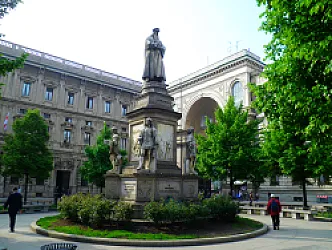
.jpg/320px-Milano_-_Monumento_Missori_(cropped).jpg)



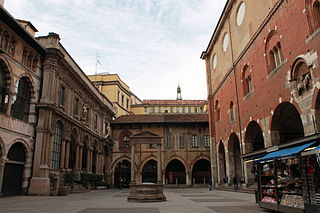








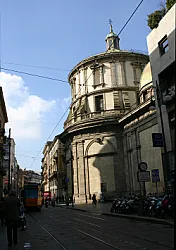
2 Days in Milan — A Compact Love Letter to Style, History, and Espresso
Milan grabbed my heart the moment sunlight spilled through the glass roof of the Galleria Vittorio Emanuele II. This city, often called the fashion capital, moves with a confident, quiet swagger. Some say it's overrated, but for me Milan's magic is in the small, lived-in moments. I wandered under arcades, sipped a bitter espresso at a corner bar, and felt instantly at home.
Why visit? Because Milan blends polished modernity with layered history in a way few cities can. It's not just about the headline sights. You’ll stroll from the shimmering Galleria Vittorio Emanuele II to the solemn grace of the Royal Palace of Milan. House Manzoni whispers literary history, while Piazza Cordusio and Piazza degli Affari pulse with urban life. Expect to hear tram bells, smell roasting coffee, and see tailored coats brushing past centuries-old stone. The feeling is elegant, unexpected, and warmly human.
Planning a trip can feel overwhelming. There is so much to see you could happily spend weeks here. If this is your first time in Milan, you might worry about missing the highlights. I get that. That’s why this Milan itinerary is focused, friendly, and realistic. Below I'll show you exactly how to spend 2 days in Milan to catch the city's essential rhythms and its hidden soul. You’ll cover key museums, grand squares, and a few secret corners that locals love.
One crucial tip before we begin: start your days early to beat the crowds and watch the city wake up. Early mornings are when the light on the cathedral is pure and the arcades feel like they belong to you. It also gives you breathing room to linger over an aperitivo later. This small habit changes everything about how you experience Milan.
Ready to find out what to see in Milan and fall in love with its contradictions? Now let's dive into the itinerary!

Quick Mini Guide to Milan
Where to stay:
- Duomo/Galleria — central, walking distance to Royal Palace and Galleria Vittorio Emanuele II; best for first-time 2‑day visits.
- Brera — artsy, great for aperitivo and proximity to Casa Manzoni and boutique shops.
- Navigli — evening atmosphere for canals and Mates, Mess and Madness MILAN tour departures.
When to visit:
- Spring or early autumn — mild weather for terraces (Duomo rooftop) and canal strolls.
- Aperitivo hours (18:00–21:00) are essential — local life peaks then in Brera/Navigli.
- Buy timed-entry for Duomo terraces and Royal Palace exhibits to skip long lines.
Things to do (2‑day plan):
- Day 1: Duomo, Galleria Vittorio Emanuele II, Royal Palace exhibition; quick walk to Piazza Cordusio and Piazza degli Affari to see the financial palazzi.
- Day 2: Casa Manzoni visit, Brera streets and Pinacoteca, afternoon Navigli canal walk and aperitivo.
- Book interactive tours: Secrets of Milan for hidden-history stories; Mates, Mess and Madness MILAN for offbeat, social evening insights.
Don't forget:
- Reserve tickets for Duomo terraces and Royal Palace in advance.
- Try risotto alla Milanese or cotoletta; enjoy an aperitivo instead of a full pre-dinner meal.
- Carry a small umbrella — sudden showers happen even in spring.
Jour 1 - Milan
10 POIs à découvrirJour 1 - Matin à Milan
5 Points d'intérêt - Durée : 2h45 - Distance : 2 km - Marche : 0h27
Université de Milan
- Membre de la Ligue des universités européennes de recherche (LERU) et considérée comme la première université d'Italie et la septième d'Europe selon The Leiden Ranking.
- L'université est composée de huit facultés et de deux écoles, offrant une grande variété de programmes d'études, notamment dans des domaines tels que les sciences politiques, l'économie, l'informatique et le droit.
- Elle entretient plus de 400 accords de collaboration académique et scientifique internationaux, notamment avec la Nouvelle-Zélande et la France.
- L'université de Milan a eu des membres récompensés par des bourses du Conseil européen de la recherche (ERC).
- Elle possède un riche patrimoine artistique et culturel, avec des bâtiments historiques dans le centre de Milan et des installations modernes à Città Studi.
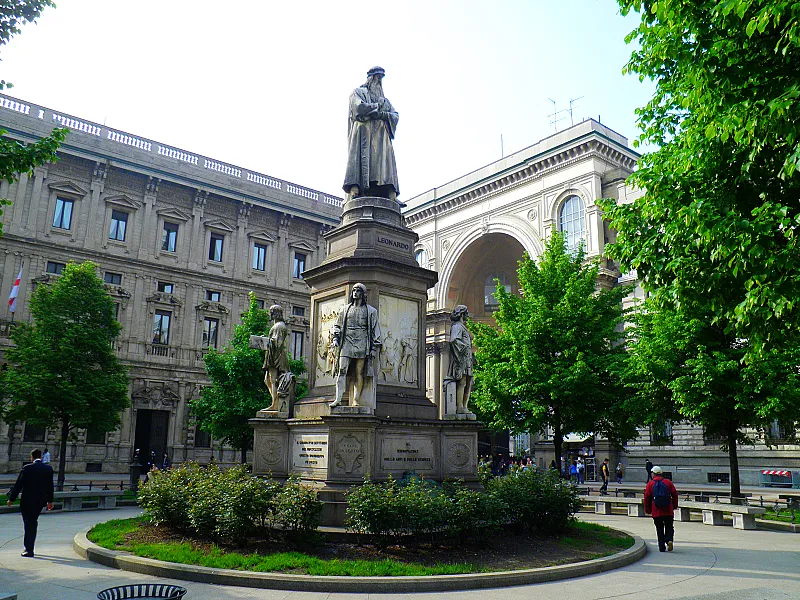
Monument à Léonard de Vinci
- Le monument a été dévoilé en 1872 et rend hommage au génie de la Renaissance Léonard de Vinci.
- La statue centrale représente Léonard tenant une plume et un parchemin.
- Elle fut conçue par Pietro Magni, un des principaux sculpteurs italiens du XIXe siècle.
- À proximité de la place à laquelle se trouve la statue se trouvent le théâtre Alla Scala et d'autres points de repère.

Église San Fedele
- L'église San Fedele de Milan a été construite au XVIe siècle sur ordre de Saint Carlo Borromeo pour accueillir les Jésuites, et elle reflète les préférences architecturales de la Contre-Réforme.
- Elle reflète les préférences architecturales de la Contre-Réforme.
- La conception de l'église aurait été instituée sur un édifice sacré préexistant nommé Santa Maria in Solariolo.
- San Fedele est un modèle architectural important car il reflète un large éventail de conceptions architecturales du passé, et plusieurs églises ultérieures s'en sont inspirées.
- La structure a été confiée aux Jésuites en 1567, qui ont entrepris la restauration et l'agrandissement de l'église.
- La chiesa di San Fedele a subi de graves dommages lors d'un bombardement le 16 avril 1943, après quoi elle a été restaurée et rendue aux Jésuites en 1945.⏳Bien que l'église ait été achevée en grande partie en 1579, la construction des parties restantes a été réalisée par d'autres architectes renommés tels que Martino Bassi et Francesco Maria Richini au cours des siècles suivants.
Palazzo del Capitano di Giustizia
- Ce palais a été construit au XIIIe siècle.
- Il servait de résidence aux capitaines de justice de Milan.
- Il présente une architecture gothique et Renaissance.
- Ses belles arcades et ses détails architecturaux se distinguent.
- De nos jours, ce bâtiment abrite le siège de certaines institutions municipales.
.jpg)
Monument à Giuseppe Missori
- Le monument à Giuseppe Missori est une sculpture en bronze.
- La statue a été réalisée par Riccardo Ripamonti (1849-1930).
- Le bronze pour la réaliser, provenant de vieux canons, a été donné gratuitement par le gouvernement.
- La plaque frontale raconte une histoire de la bataille de Milazzo citée dans les mémoires de Giuseppe Garibaldi.
- Ce monument a été inauguré le 7 mai 1916.
- Le monument, représentant Missori sur son cheval, a attiré l'attention par la pose inhabituelle du cheval.
Jour 1 - Après-midi à Milan
5 Points d'intérêt - Durée : 3h30 - Distance : 1.1 km - Marche : 0h15Église San Gottardo in Corte
- L'édifice a été construit de 1330 à 1336 sous l'ordre d'Azzon Visconti, une chapelle ducale conçue par l'architecte Francesco Pecoraro.
- L'église était initialement dédiée à la Vierge, mais Azzon Visconti, souffrant de la goutte, l'a ensuite dédiée à Gothard de Hildesheim, le saint-patron des victimes de cette maladie.
- L'intérieur de l'église a été restauré à l'époque néoclassique par Giocondo Albertolli, avec des œuvres d'art telles qu'une partie d'une Crucifixion de Giotto, une toile représentant Saint-Charles Borromée par Giovanni Battista Crespi, et la tombe d'Azzone Visconti.
Monument à Vittorio Emanuele II
- Il a été créée en 1879-1896 par Ercole Rosa.Il se trouve sur la Piazza Duomo, Milan, Italie.
- Il est en bronze (statue et hauts-reliefs), marbre de Carrare et granit (socle).

Dôme de Milan
- La construction a débuté en 1386 et était considérée comme achevée en 1965, bien que certains blocs ne soient pas encore terminés.
- Des architectes français et italiens ont participé à plusieurs phases de la construction.
- La façade combine des éléments gothiques et de la Renaissance.
- En 1762, la flèche "Madonnina" fut érigée avec une statue de la Vierge Marie. Léonard de Vinci influença la conception de la coupole.
- Napoléon Bonaparte finança l'achèvement de la façade en 1805.

Museo del Novecento
- Expose près de 400 œuvres d'art du 20e siècle, principalement italiennes.
- La collection met l'accent sur les artistes italiens du 20e siècle, notamment les futuristes comme Giacomo Balla et Umberto Boccioni.
- Elle présente également des œuvres d'artistes individuels comme de Chirico, Lucio Fontana et Morandi, ainsi que des mouvements artistiques du 20e siècle comme l'abstractionnisme et l'Arte Povera.
- Il a reçu d'importantes donations, notamment des œuvres d'artistes tels qu'Andy Warhol et Roy Lichtenstein.
- Parmi les œuvres remarquables du musée figurent "Il Quarto Stato" de Giuseppe Pellizza et "Ragazza che corre sul balcone" de Giacomo Bella.
Église San Carlo al Corso
- L'édifice actuel a été construit pour remplacer l'église médiévale de Santa Maria dei Servi et est de style néoclassique inspiré du Panthéon de Rome. basilique a été construite entre 1832 et 1847 sous la direction des architectes Carlo Amati et Filippo Pizzagalli.
- L'église est dédiée à Saint Charles Borromée et a été érigée en remerciement de l'arrêt d'une épidémie de choléra dans la région.
- Le maître-autel abrite une crucifixion en bois de Pompeo Marchesi, et des retables d'artistes renommés sont conservés dans le couvent adjacent.
- Elle abrite également une bibliothèque dans son portique droit et un orgue dans le chœur gauche du presbytère.
Jour 2 - Milan
8 POIs à découvrirJour 2 - Matin à Milan
5 Points d'intérêt - Durée : 3h30 - Distance : 1.6 km - Marche : 0h21
Teatro dal Verme
- Conçu par Giuseppe Pestagalli à la demande du comte Francesco Dal Verme.
- Utilisé principalement pour le théâtre et l'opéra au 19e et au début du 20e siècle.
- Actuellement utilisé comme salle de concert, de théâtre et de danse, ainsi que pour des expositions et des conférences. comptait à l'origine 3000 places assises et une grande coupole.
- Inaugurée le 14 septembre 1872 avec une représentation des "Huguenots".
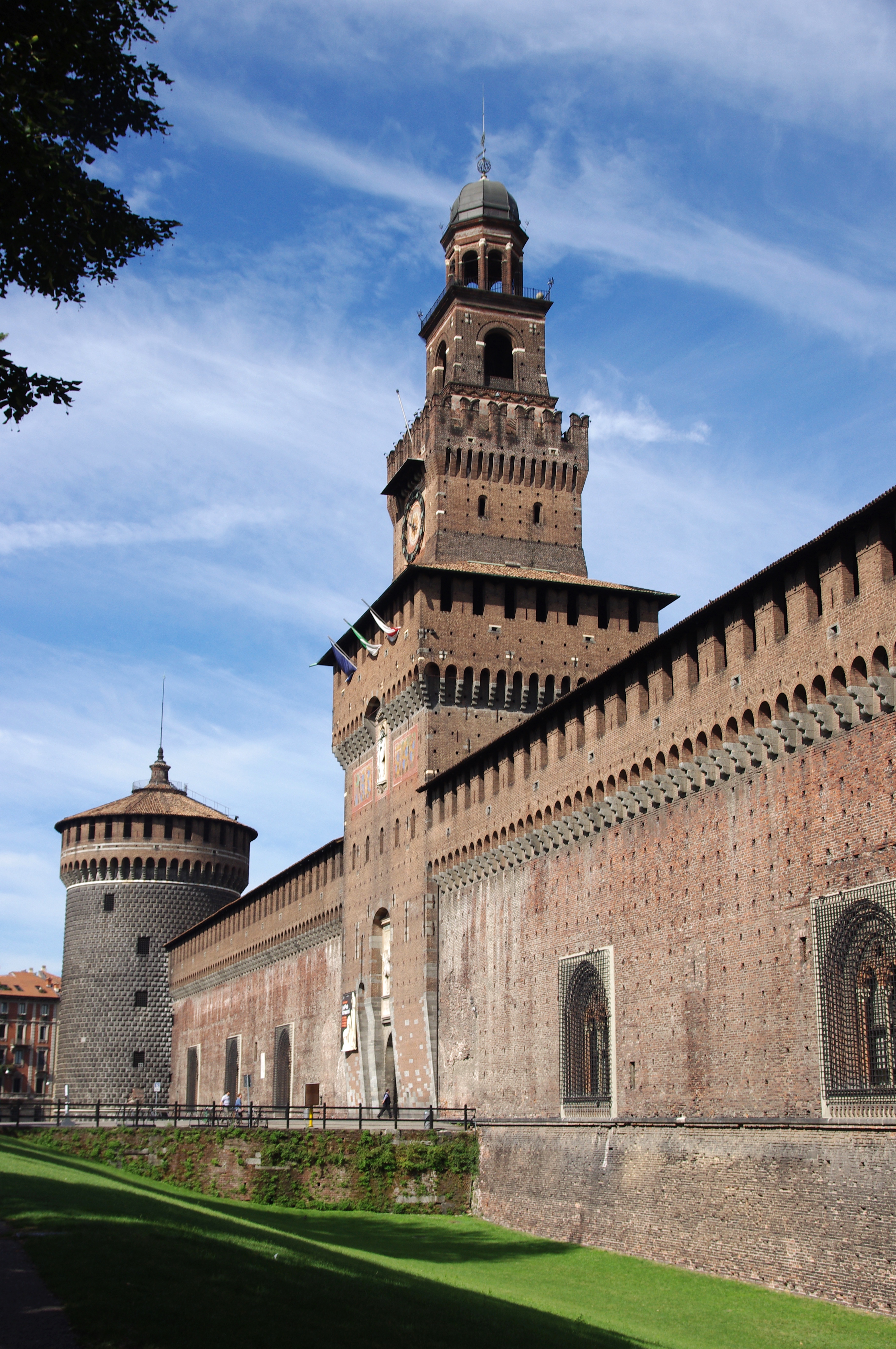
Château des Sforza
- Le parc Sempione est situé au nord du château.
- Construit au 14ème siècle et modifié par les générations suivantes.
- Utilisé comme résidence par la famille Sforza et décoré par des artistes tels que Leonardo da Vinci. présente un design carré avec quatre tours d'angle et a subi des dommages au cours de l'histoire. comprend le musée archéologique, le musée d'art ancien, la Pinacothèque et plus encore, avec des œuvres d'artistes célèbres.
- Des œuvres attribuées au Caravage et des dessins inédits de Léonard de Vinci ont été trouvés dans le château.

Palazzo dei Giureconsulti
- Il Palazzo dei Giureconsulti est un palais historique de style maniériste à Milan.
- Il fut construit en 1562 sous la conception de Vincenzo Seregni.
- Au cours de son histoire, il abrita le Collegio dei Nobili Dottori, puis la Borsa Valori et la Camera di Commercio.
- Il a été endommagé par des bombardements en 1945 et a subi des restaurations en 1991, étant renommé Palazzo Affari ai Giureconsulti.
- Le palais a une superficie de 4000 m2 sur quatre étages et diverses salles pour des réunions et des expositions.
Piazza Mercanti
- Créée au Moyen Âge, puis transformée en Via Mercanti.
- Entourée du Palazzo della Ragione, de la Casa dei Panigarola et de la Loggia degli Osii.
- Fondée au 13e siècle, elle était à l'origine plus large, avec des accès à différents quartiers de la ville.
- Au centre de la place se trouve une fontaine du 16e siècle.
- La place est ornée de sculptures du XVIe siècle.
- Parmi les sculptures figurent un relief romain représentant la semilanuta scrofa et une statue du podestà Oldrado da Tresseno.
- On y trouve également des monuments au poète Decimus Magnus Ausonius et à Sant'Agostino.

San Sepolcro
- L'église San Sepolcro est un lieu de culte catholique, fondé à l'origine en 1030 et largement modifié au cours des siècles.
- L'édifice était à l'origine nommé Santissima Trinità par son fondateur, Benedetto Ronzone, et a été construit sur un forum romain.
- En 1100, l'archevêque Anselmo da Bovisio a redédié l'église au Saint Sépulcre de Jérusalem en l'honneur de l'importance des lieux saints pendant les croisades.
- La conception de l'église, en forme de croix par son fondateur, a été modifiée pour ressembler à l'Anastasis de Jérusalem après la première croisade.
- L'église a fait l'objet de nombreuses restaurations, notamment un changement de style baroque en 1605 par l'architecte Aurelio Trezzi et un retour au style roman à la fin du 19e siècle.
- En 1928, l'église a été acquise par la Bibliothèque Ambrosienne et a perdu son statut de paroisse, mais elle a été utilisée comme lieu d'exposition d'art après avoir été restaurée en 1968.
Jour 2 - Après-midi à Milan
3 Points d'intérêt - Durée : 2h00 - Distance : 0.6 km - Marche : 0h07Piazza degli Affari
- Siège de la Bourse de Milan, fondée le 16 janvier 1808.
- Site du théâtre romain de Milan, construit au 1er siècle avant JC et détruit en 1162.
- Rénové avec deux palais majestueux, le Palazzo Mezzanotte et un autre, en 1930-1939.
- Sculpture " L.O.V.E. " de Maurizio Cattelan, avec une main coupée à l'exception du majeur, placée au centre de la place en 2010.

Piazza Cordusio
- Elle abrite le siège d'UniCredit et des filiales d'Intesa Sanpaolo et de Barclays.
- Le Palazzo Broggi a été le siège de la Bourse de Milan entre 1901 et 1932.
- L'histoire de la place remonte à l'époque lombarde.
- Aux 19e et 20e siècles, la place a été modifiée dans sa conception et ses bâtiments.
- La place apparaît dans des films comme "Gli uomini, che mascalzoni..." et "La corruzione.".
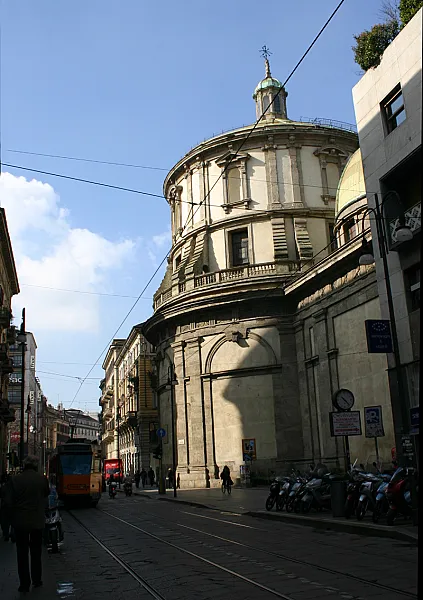
San Sebastiano
- Le Tempio Civico di San Sebastiano a été conçu par Pellegrino Tibaldi (1527-1596) et sa construction a commencé en 1576.
- L'église a été érigée par le gouverneur de Milan, Antonio de Guzmán Zúñiga y Sotomayor, en réponse à une peste dévastatrice qui avait frappé la ville.
- L'édifice a été achevé en 1616.
- Il a subi des changements administratifs entre la Curie et le bureau du gouverneur, jusqu'à ce qu'il soit confié à un "conservatoire" municipal en 1861, principalement pour la protection artistique.
- Le projet novateur du Tempio Civico di San Sebastiano, élaboré par Tibaldi, tenait compte de l'espace limité disponible et des maigres fonds disponibles pour la construction.
- Le projet a abouti à une structure parfaitement cylindrique, une caractéristique commune aux églises chrétiennes primitives.
- L'église abrite un orgue à tuyaux, construit en 1928 par Balbiani-Vegezzi Bossi, situé à l'intérieur de deux buffets sculptés de façon complexe.
- L'église a toujours eu un statut fondamentalement ambigu, civil et religieux, puisqu'il s'agissait d'une entreprise commune dès le début de sa construction.
Where to Stay in Milan
For a two-day stay in Milan, location matters more than anything else: you want to spend your time inside the ring of historic streets rather than fighting traffic. The centre is compact and pleasantly walkable, so choosing a base near the Duomo area lets you step out and reach the Galleria Vittorio Emanuele II, the Royal Palace of Milan and the theatres within minutes. Staying centrally means mornings for museums and afternoons for wandering charming streets, with evenings spent in one of Milan’s lively squares or quiet inner courtyards.
Understanding how the city is organized helps pick the right neighborhood. Milan’s heart is a cluster of distinct quarters radiating from the cathedral: elegant shopping avenues and grand arcades to the south, refined residential streets and museums to the east, and lively cafés and galleries to the north. Public transport — a dense network of metro lines, trams and buses — fans out from this core, so even if your room isn’t just off the piazza you can be there in ten minutes.
If your priority is immediate access to the Galleria Vittorio Emanuele II and the Royal Palace of Milan, aim for the Duomo/Centro Storico area where centuries of architecture sit side by side. If you prefer a slightly quieter, more atmospheric base with narrow streets, galleries and café culture, the Brera district sits a short stroll away and is perfect for afternoons spent exploring House Manzoni and nearby art attractions. For businesslike convenience with quick links to the stock exchange and historic banking quarter, the Cordusio/Piazza degli Affari area places you close to trams, metros and iconic façades.
Transport tips are simple and practical: choose lodging within a short walk of a metro station (lines M1, M3 cover the central spine) or a major tram stop so you can hop back to your room quickly between excursions. Taxis are plentiful but traffic can be slow; if you arrive by train, the central station gives excellent metro connections. If you stay a little farther out, opt for places with easy luggage storage and clear check-in instructions so your first and last day remain stress-free.
Finally, trust your comfort: for two days, a small boutique hotel, a family-run B&B or a serviced apartment near the centre will maximize sightseeing time. Look for rooms facing inner courtyards or quiet side streets for better sleep, and pick accommodation with flexible check-in when possible — that one thoughtful detail will make your short Milan stay calm, efficient and delightfully local.
Getting Around Milan
Milan’s public transport is surprisingly friendly for visitors — compact, frequent and easy to read once you know the basics. The heart of the city is served by an obvious network: the Metro lines link major sights, elegant surface trams glide through historic streets, and buses fill in the gaps. The operator, ATM, keeps signs clear and maps printable at stations, so even if Italian isn’t your strong suit you’ll find color-coded lines and station names that match your smartphone. I love how approachable it feels: on my first afternoon I hopped off the metro, followed the signs to the Galleria and instantly felt at home among the bustle. 🚇
Practicalities are simple. You can buy a single ticket from station machines, tabaccherie or the official app, and you must validate that ticket when you board or pass through turnstiles — in Milan the rule is to validate once and your ride is good for 90 minutes. If you plan several hops in a day, consider a 24/48/72-hour pass or the tourist MilanoCard which bundles transport with museum discounts; prices vary but a single ticket is roughly €2.20 and day passes often start around €7, so a quick math check often pays off. 🎫
Use Google Maps like a local guide: switch to the transit layer, pick your departure time and watch step-by-step directions that include platform names, walking times and scheduled departures. It will tell you whether it’s faster to walk from the Galleria Vittorio Emanuele II to your next stop or to wait two minutes for a tram. I always check live departures so I’m not standing on a windy corner — and Maps’ walking directions through Milan’s arcades are great for discovering shortcuts and arcaded streets you’d otherwise miss. 🗺️
Money-saving tip: if you’ll visit several museums and move around the center, a multi-day pass quickly pays for itself. Buy tickets in advance on the app to skip queues, validate every ride to avoid fines, and remember that many attractions — including the Royal Palace of Milan area — are close enough to combine walking with a single short ride. Small choices add up: a little planning saved us several euros and gave us more time to sip espresso instead of queuing.
Personal note: once, weary after a morning at the Duomo and Galleria, we wanted to reach the House Manzoni without dragging luggage. We scanned a digital single ticket on the ATM app, hopped on a tram that showed up in two minutes, validated on board with the little machine and enjoyed a scenic five-minute ride across the fashion district. It felt effortless — with a validated ticket, clear signs and Google Maps in my pocket, navigating Milan quickly becomes part of the fun. 💡
What to Pack for Milan
Two days in Milan is a sprint of churches, arcades, squares and cafés — I always treat it like a stylish city scavenger hunt. On my last short trip I was out for 10+ hours each day and walked about 12 miles (19 km) total, so I pack for comfort, pickpocket smart, and a little flair. Below are the essentials I actually use and why each one matters in real Milan situations.
1. Comfortable walking shoes (required — e.g., New Balance 574 or ECCO Soft 7): I learned this the hard way after a day from Duomo to Navigli where I walked 15 miles and regretted fashion heels instantly. Stiff soles and good cushioning saved my second day. Milan has cobblestones and long indoor arcades; breathable, supportive shoes keep you exploring all day.
2. Cross-body bag (zippered, worn in front): I carry a compact cross-body with a secure zipper and inner pocket — once I felt a hand on a crowded tram near Centrale, and having the bag worn in front prevented a pickpocket attempt. It’s hands-free for maps and espresso runs and the best way to protect phone, wallet and metro ticket in busy Galleria Vittorio Emanuele II.
3. Weather-appropriate clothing for Milan (light layers + a smart jacket): Milaners dress sharp but the weather shifts—during one spring visit mornings were cool and afternoons were sunny. I bring thin layers, a lightweight waterproof jacket, and a scarf. Layers mean you’re comfortable inside stylish cafés and outdoors in the square without looking out of place.
4. Power adapter (Type L for Italy, 230V): My phone and camera ran dead mid-afternoon on day one until I used a proper Italian adapter. Cafés don’t always have convenient sockets, so a small Type L adapter avoids hunting for a charger and keeps your devices ready for photo-heavy museum-free days.
5. Power bank (10,000 mAh+): I carried a 10,000 mAh power bank and topped up phones between stops — essential when you're out for 8–12 hours taking photos, using maps and checking tram times. Choose one that can fully recharge a smartphone at least once or twice.
6. Optional extras — compact umbrella & sunglasses: Milan’s weather can flip; a compact umbrella fits a small bag and saved me from a sudden shower. Sunglasses are a must for sunny piazzas and reflective shop windows. Both are small, practical additions that kept me comfortable and camera-ready.
Enjoy Your Trip to Milan !
In two energetic days you'll explore 14 carefully chosen spots across Milan, from the grand arcades of the Galleria Vittorio Emanuele II to the intimate House Manzoni and the stately Royal Palace of Milan. This itinerary is packed with historic architecture, vibrant squares, top museums and shopping moments—everything you need to taste Milan in a weekend.
Remember, this is a guide, not a strict schedule. Let it steer you, but leave room for the unexpected: the real magic often happens in unplanned moments—getting delightfully lost in Navigli lanes, stumbling on a tiny museum, or lingering over an espresso at a corner café. Don’t feel you must see EVERYTHING; slow down, savor, and follow curiosities with a relaxed heart.
I hope you feel excited and ready—I’m genuinely excited for you! Embrace the rhythm of Milan, from opera echoes at La Scala to sunlit piazzas, and let yourself collect unforgettable memories. You're going to love the small surprises as much as the big sights; enjoy every vibrant moment and the people you meet along the way.
Want to explore Milan in a playful way? Check out Coddy’s interactive tours—Secrets of Milan, Mates, and Mess and Madness MILAN—perfect for turning sightseeing into a gamified adventure. They’re a fun, relaxed way to discover hidden stories while you wander and playfully compete or collaborate.
Have an incredible two days—soak in the style, history, and espresso-fueled moments. If you want tips or want to share photos, ask me anytime. Enjoy! Safe travels!
Envie de plus d'aventure ?
Découvrez nos jeux d'évasion urbains pour transformer votre visite en aventure interactive !















